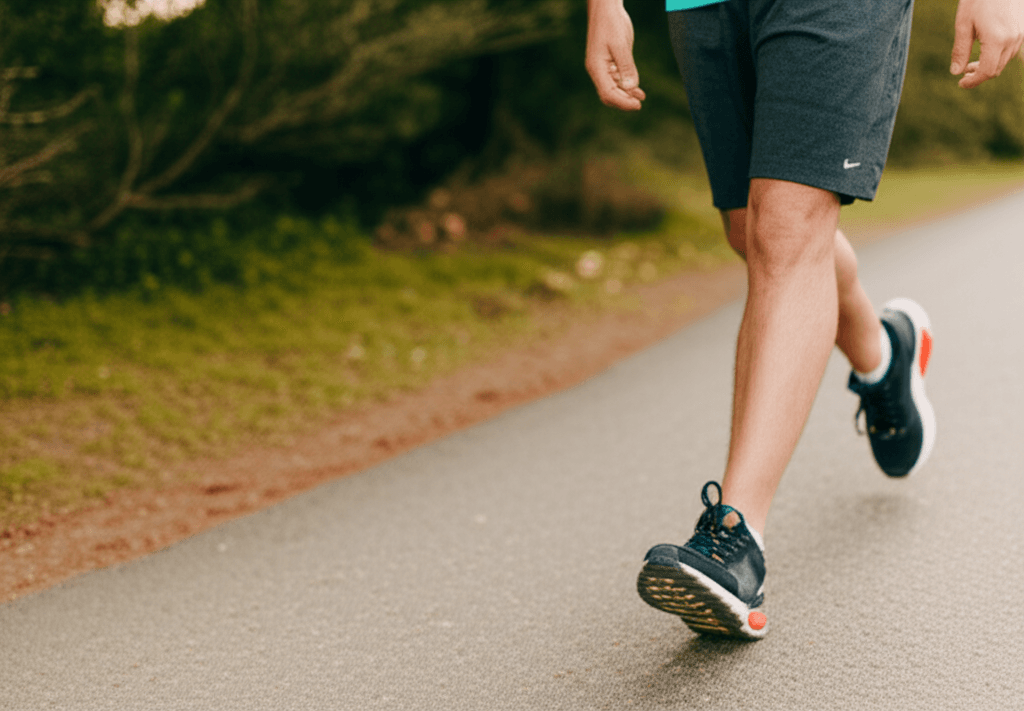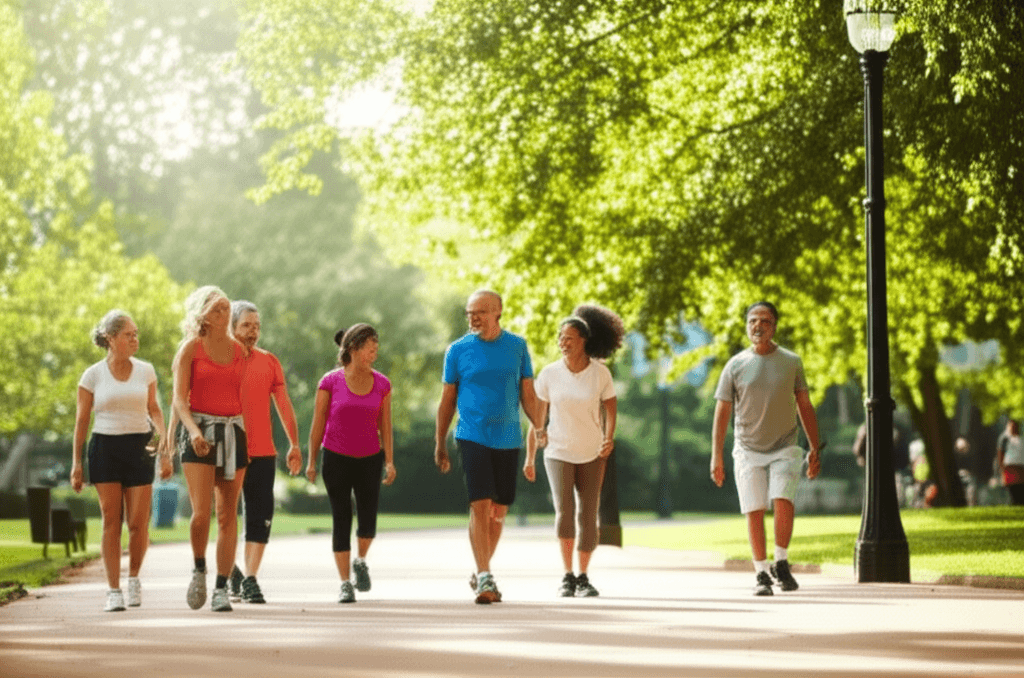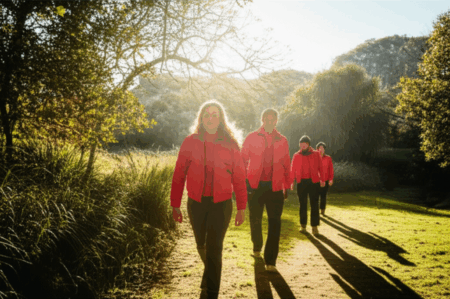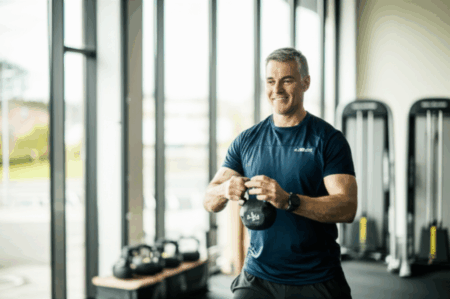The 6-6-6 walking routine has emerged as a popular fitness trend, gaining traction across social media and wellness platforms for its simplicity and effectiveness. Despite its somewhat ominous name, this routine is designed to be accessible and beneficial for a wide range of individuals looking to incorporate more consistent movement into their lives. It offers a structured yet adaptable approach to daily physical activity, making it appealing to those who may struggle with motivation or gym fatigue.

What is the 6-6-6 Walking Routine?
The core of the 6-6-6 walking routine is straightforward: it involves a 60-minute brisk walk, ideally performed at either 6 a.m. or 6 p.m. This 60-minute walk is bookended by a 6-minute warm-up and a 6-minute cool-down, bringing the total workout time to 72 minutes.
Breaking Down the “6s”
- First 6: 6-Minute Warm-up
This initial phase is crucial for preparing the body for exercise. It involves walking at a slow, easy pace to gradually increase heart rate and warm up muscles. Some variations also suggest incorporating light stretches and mobility exercises like arm circles and neck rolls. - Second 6: 60-Minute Brisk Walk
This is the main component of the workout, where the goal is to walk at a brisk pace that elevates your heart rate and challenges your cardiovascular system. Experts recommend aiming for “Zone 2” of your heart rate range, which is approximately 50-70% of your maximum heart rate. This pace allows your body to efficiently burn fat for fuel. A brisk pace is generally considered around 3 miles per hour (mph) or faster, and should feel effortful, though you should still be able to hold a conversation, albeit sounding a little breathy. - Third 6: 6-Minute Cool-down
Following the brisk walk, the cool-down period involves gradually slowing your pace to bring your heart rate back down. This aids in recovery and can include gentle stretches to help muscles recover and reduce soreness.
Variations of the Routine
While the standard interpretation focuses on the time-based structure, some individuals interpret the 6-6-6 challenge as walking 6,000 steps per day for 6 days a week. This offers a more flexible option for those seeking daily consistency without the strict time commitment. It’s also possible to adapt the routine by splitting the 60-minute walk into two 30-minute sessions or performing it five days a week instead of six, allowing for greater lifestyle integration.

Why is the 6-6-6 Walking Routine Trending?
The 6-6-6 walking routine’s popularity stems from several key factors that resonate with individuals seeking effective and sustainable fitness solutions.
Simplicity and Accessibility
Unlike many complex workout programs, the 6-6-6 routine is incredibly simple to understand and execute. It requires no special equipment or gym membership, making it low-cost and accessible to most people. All that’s truly needed are comfortable shoes and a safe place to walk, whether indoors on a treadmill or outdoors. This low barrier to entry makes it an appealing option for beginners or those returning to fitness.
Structured Consistency
The clear, numerical framework of the 6-6-6 challenge takes the guesswork out of exercising, providing an easy-to-follow routine. The specified times (6 a.m. or 6 p.m.) can help individuals establish a consistent daily habit. Fitness experts emphasize that consistency is key for lasting results, and this routine fosters that through its manageable structure. Morning walks can help set the body’s circadian rhythm and increase adherence to routines, while evening walks can help unwind and regulate blood sugar.
Low-Impact, High-Reward
Walking is a low-impact exercise, meaning it places less stress on joints and tissues compared to higher-impact activities like running. This makes it suitable for older adults or individuals with joint pain or limited mobility. Despite being low-impact, the routine is designed to be highly rewarding, supporting fat loss, boosting stamina, and aiding in recovery.

Who is the 6-6-6 Walking Routine For?
The 6-6-6 walking routine is broadly applicable to a diverse range of individuals, particularly those who are:
Beginners and Those Returning to Fitness
Its simplicity and low-impact nature make it an excellent starting point for individuals new to exercise or those getting back into a fitness routine after a break. The structured format can help build foundational habits without overwhelming them.
Individuals with Busy Schedules
By suggesting specific times like 6 a.m. or 6 p.m., the routine helps people fit exercise into their day before their schedule becomes too hectic. This makes it a time-efficient solution for those with demanding lives.
People Seeking Weight Management
While walking alone needs to be combined with a balanced diet for weight loss, the 6-6-6 routine can significantly contribute to calorie expenditure and boost metabolism. Brisk walking in Zone 2 helps the body burn fat more efficiently. Studies suggest that walking 30-60 minutes daily can improve insulin sensitivity and reduce abdominal fat, especially when combined with strength training.
Those Looking for Mental and Physical Health Benefits
Beyond physical fitness, the 6-6-6 walking routine offers numerous mental health advantages. Regular walking has been shown to reduce stress, improve mood, and decrease the risk of conditions like anxiety and depression. Walking outdoors can expose individuals to natural light, supporting circadian rhythm and easing anxiety. Physically, it can lead to improved cognition, better sleep, stronger bones, and a reduced risk of chronic diseases such as heart disease, stroke, diabetes, and certain cancers.
Anyone Seeking Consistency and Accountability
The routine’s structured nature helps build consistency, which is often more effective for lasting results than infrequent, intense bursts of effort. Doing the challenge with a friend can also provide accountability and motivation.
In essence, the 6-6-6 walking routine is more than just a passing trend; it’s a practical and sustainable tool for integrating consistent movement into daily life, offering a wealth of physical and mental health benefits without requiring significant investment or prior fitness expertise.







